The city of Modena remembers one of its greatest artists, Umberto Tirelli (Modena, 1871 - Bologna, 1954) one hundred and fifty years after his birth, and it does so with a major exhibition, entitled Umberto Tirelli. Caricatures for a Theater of Life, which traces his entire activity. The exhibition, housed in the San Paolo Complex of the Museo Civico di Modena from Dec. 19, 2021 to April 25, 2022, curated by Stefano Bulgarelli and Cristina Stefani, can count on 230 works, including drawings, sculptures, paintings, masks and puppets, to celebrate a great illustrator, a master of caricature, and a theater artist. The aim of the exhibition is to delve into the centrality of an artist who made caricature his sole and indispensable means of expression, coming to prominence on a national and European level.
Tirelli, the author of a prolific and very versatile production, juggled between political and social satire, cast his sharp and ironic gaze on the bourgeoisie and the local and nationalestablishment in the complex of their social, political and cultural aspects, was starred in the satirical pages of the newspapers of the Belle Époque and the Great War, was forced to reinvent himself in the Fascist era and to some extent put himself in the service of propaganda, and lived long enough to witness the international tensions that marked the beginning of the Cold War and the dawn of the first economic boom. Interweaving visual and performing arts, Tirelli interpreted the larger “theater of life” in its heterogeneity, offering a critical reading of his time and its protagonists, of the most hidden facets of the human soul and of forms of power even in their most deteriorating aspects.
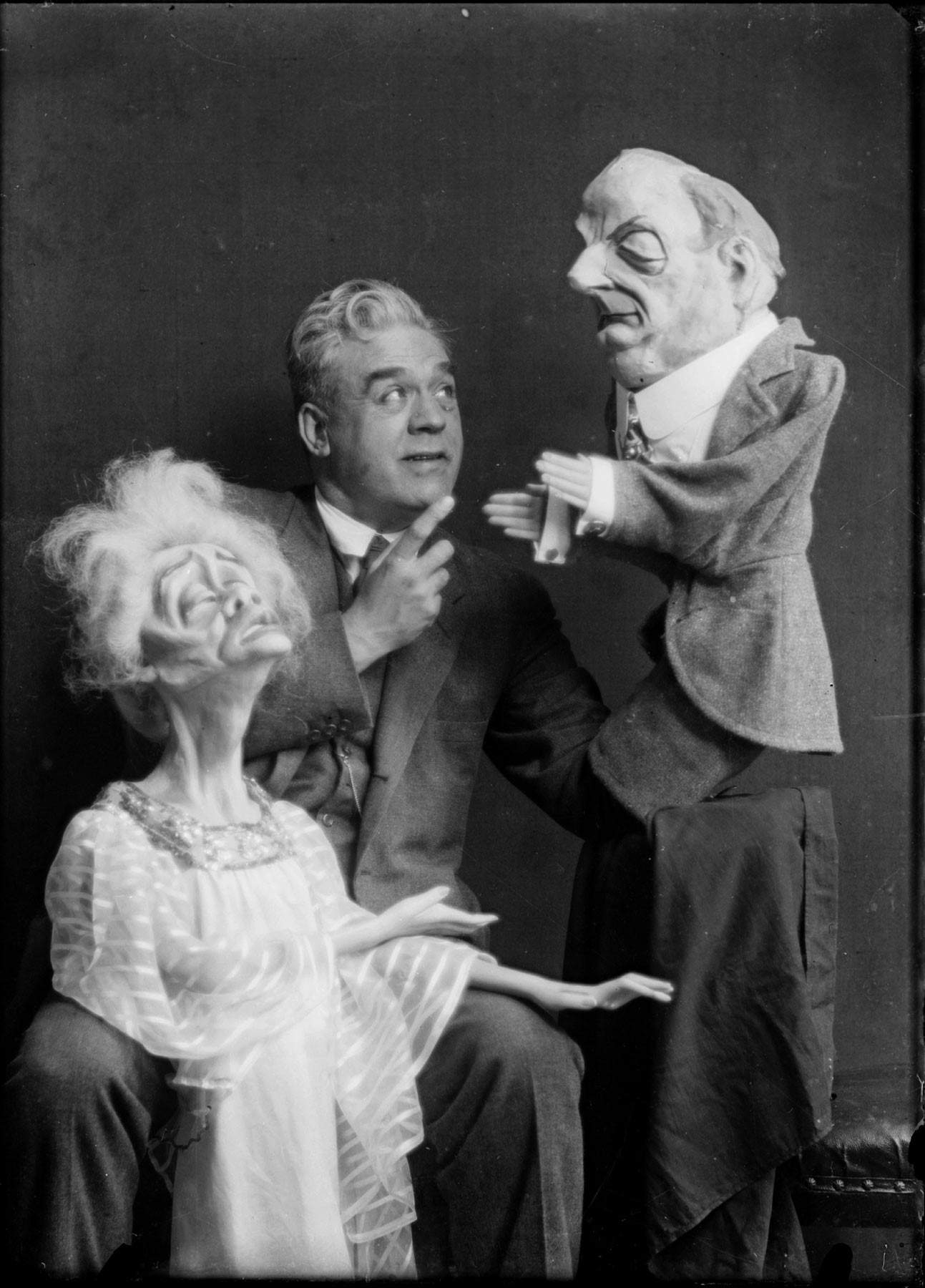
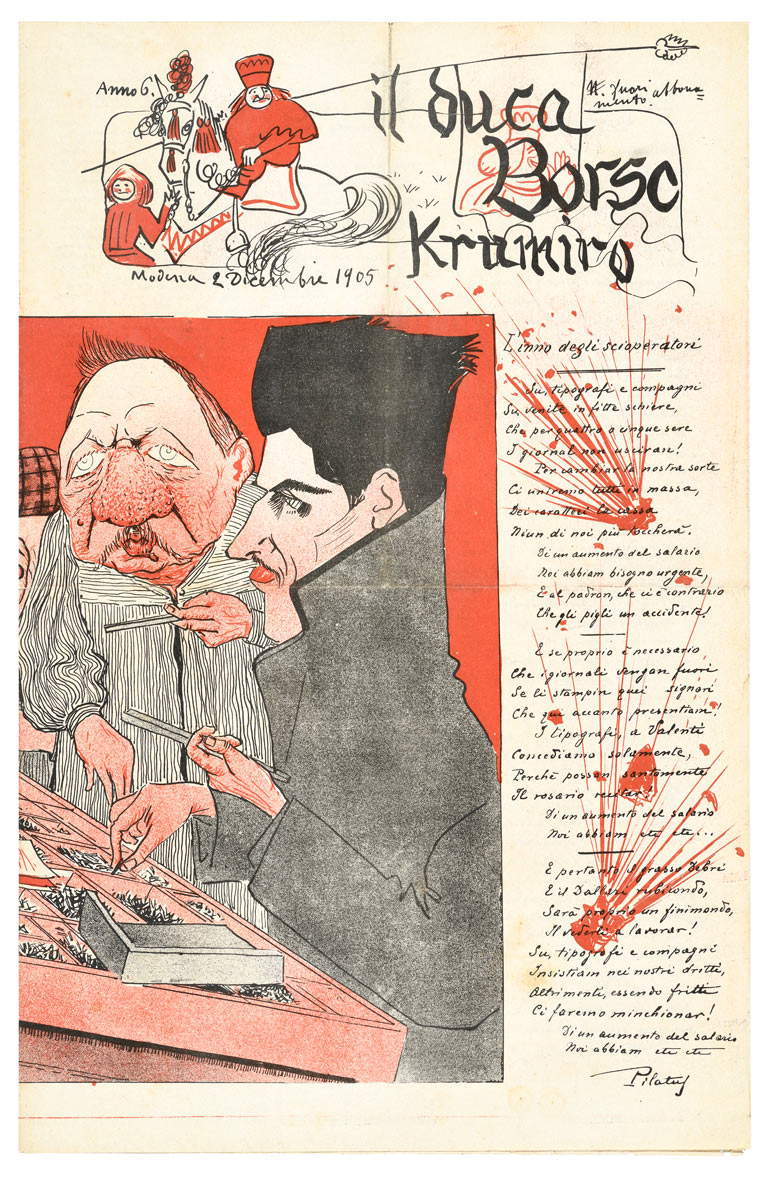
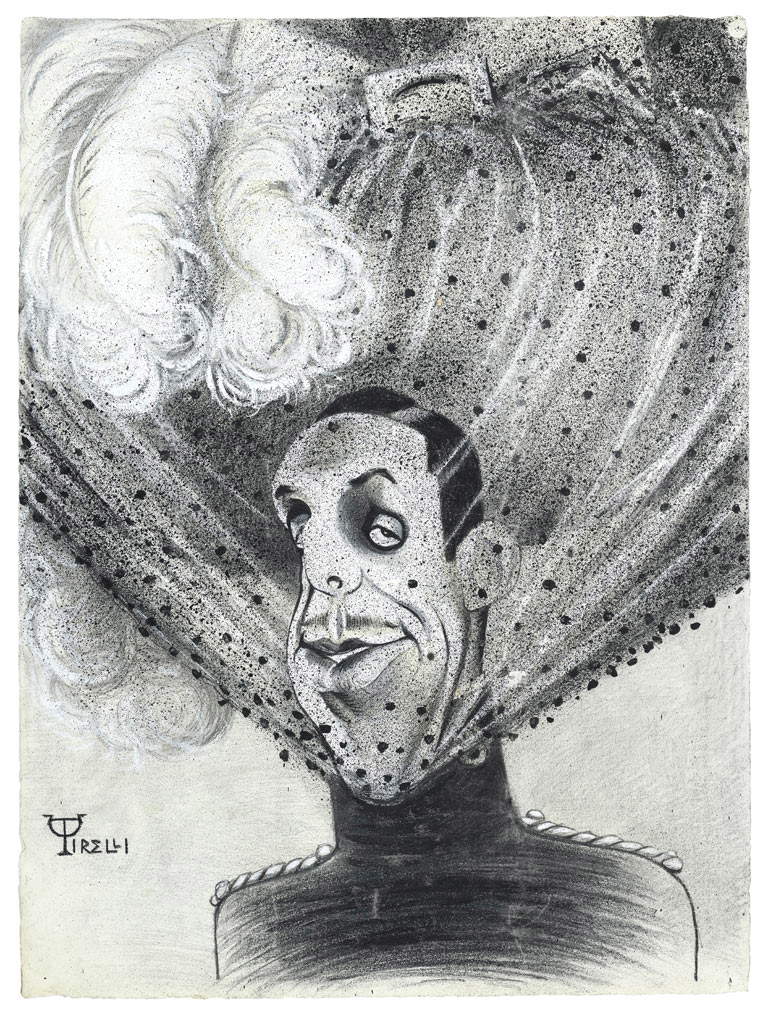
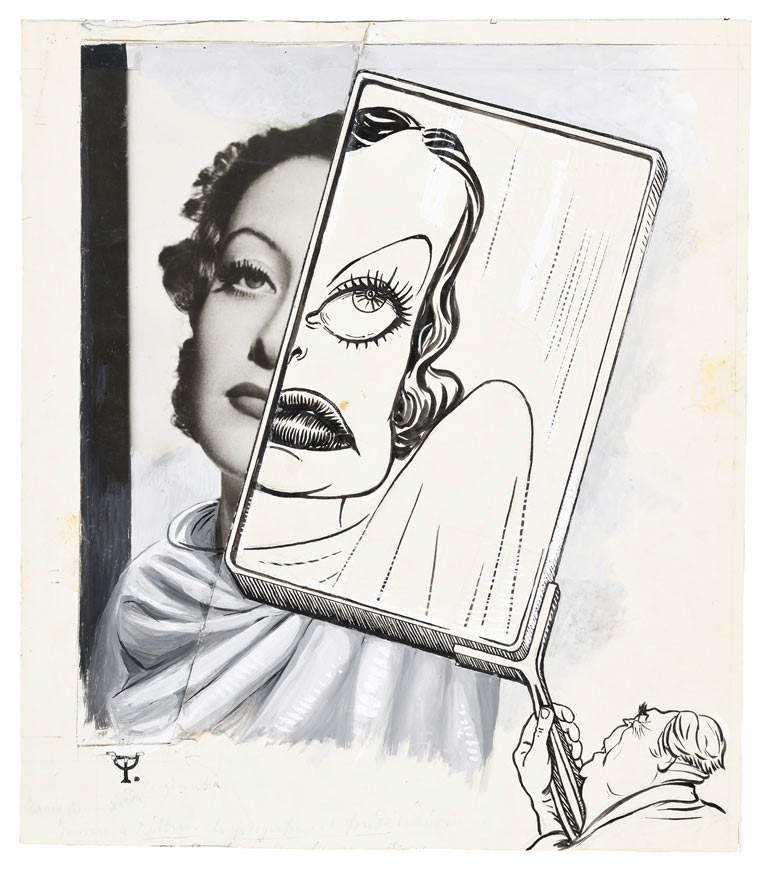
Born in Modena in 1871, after his education at the Liceo San Carlo in his hometown, Tirelli confronted the reality of his time, of which he offered an ironic glimpse through local satirical publishing. Tirelli was one of the most original figures in the artistic-literary milieu of Modena during the Belle Époque years, and in 1896, at the age of twenty-five, he joined the editorial staff of the satirical newspaper Il Marchese Colombi, created by Alfredo Testoni, and four years later founded Il Duca Borso, the most important humorous newspaper in which his caricatures of the city’s best-known personalities triumphed, stylistically updated on the basis of European satirical publishing, particularly French. Tirelli’s participation in the newspaper ended in 1908, following his move to Bologna.
In the Emilia capital Tirelli came into contact with the environment of local satirical magazines through the newspapers Il Fittone, with which he worked alongside Augusto Majani in art Nasica, Il Giornale delle Beffe and Il Punto, which he founded in 1913. In the midst of the Great War, with his publisher friend Angelo Fortunato Formiggini he published I protagonisti (1917), a portfolio containing lashing caricatures of royalty and heads of state involved in the conflict, some of which were exhibited in London, Chicago and Liverpool. Keeping his biting gaze on reality unaltered, in the early 1920s he conceived an original form of large-scale caricature puppet theater having as its subjects the major figures of the Italian jet-set of the time, from politics to culture, religion, and entertainment: this was the Teatro Nazionale delle Teste di Legno. Keeping a constant eye on the current affairs of his time, to the 1930s and 1940s belong creations of stage sets, allegorical floats and caricature illustrations on the pages of the “Resto del Carlino.” In the latter in particular, the scene of the Hollywood star system stands out: from Greta Garbo and Charlie Chaplin, Gary Cooper and Marlene Dietrich, Laurel and Hardy to Buster Keaton and Mickey Mouse. To 1941 belong some forty political caricatures in which the enemies of Italy, such as Stalin, Churchill and Roosevelt, are targeted and degraded according to the populist demagogy of the regime and depicted as madmen, transvestites, thieves or looters. However, this was a brief interlude: between 1942 and 1945 the artist suspended his activities, and no documents have yet been found to testify exactly what the artist did during the harshest years of World War II.
Even after the war Tirelli remained active, continuing to look at the Italian and international situation with an ironic eye. His last works are characterized by rough surfaces in which the gestural nature of the modeling, the expressiveness, and the skill of the execution emerge, all aspects that earned him wide public and critical acclaim at the 1951 Quadriennale in Rome. Subjects belonging to history and literature continue in his latest sculptural production. This is the case with the group with Cavour, Mazzini, Vittorio Emanuele II and Garibaldi ideally taken inside an osteria, that is, a place, along with the Cafés, long loved by Tirelli for its inexhaustible source of stimuli. The same returns with the Osteria del Parnaso that sees the great names of Italian literature gathered to play cards: Dante, Tasso, Ariosto and Petrarch perhaps suggested by Boccaccio. The artist died in Bologna in 1954, and is buried in Modena by his will.
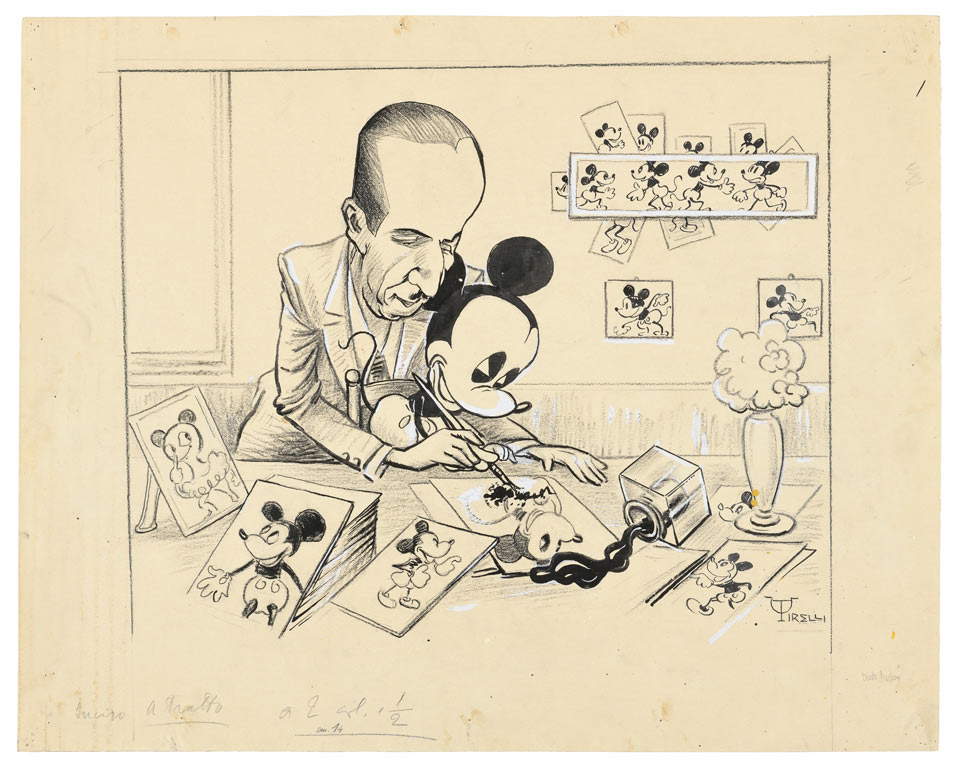



Umberto Tirelli took his first steps as a satirical illustrator in late 19th-century Modena: the artist, writes exhibition curator Stefano Bulgarelli, “is fascinated by the graphic renewal of advertising posters, which he collects, frequents the Municipal Theater and the freshly opened Storchi, the Caffè Nazionale with its luxurious Art Nouveau interiors, as well as charity parties, masquerade parades during carnival and veglioni organized by artistic societies or literary circles.” He is also a frequent visitor to taverns where artists and dialect poets gather: in this context Tirelli develops his shrewd and witty streak. The first illustrations, dating back to the period when Tirelli began working as a satirical illustrator for the newspaper Il Marchese Colombi, are inspired by what the artist saw around him: the society of a small provincial town with a soul at once bourgeois and popular. Instead, it was after his move to Bologna, towards the end of 1907, that Tirelli’s illustration veered toward politics. Nor would he lack commitment during the Great War: Il Punto took sides on the interventionist front and Tirelli signed almost all of the magazine’s opening plates, initially played on the theme of an imaginary dialogue between a great of the past and a character of the present linked to it.
“Tirelli,” writes Cristina Stefani, “is part of that large group of cartoonists who, after having placed under the deformed lens the protagonists of worldliness, sports and cultural life, now turn their gaze toward the war by making their voices heard through satirical newspapers and specific publications. The caricature embroiled in the news, in daily events, readily intercepts the news and looms as the most vivid and polemical expression of the current state of mind: ’Never as today has the drawing replaced the ancient frustrating epigram, the biting pasquinata. Today, in the midst of apologies and the most diverse filippications: amidst the speeches of propaganda and defeatism, caricature has the mission of bringing things and the meaning of events back to their proper place’.”
Dating back to the years situated around 1920 is the creation of the caricature puppets, depicting contemporary characters, which Tirelli made in order to make them participate in real theatrical staging: a grand theater in which personalities from politics, culture, and customs of the time participated. The “National Theater of Wooden Heads” founded by the artist alludes in its name to the material from which the alluding puppets are made, but it is also an ironic mockery of the ... abilities of such characters. Teatro, according to Bulgarelli, is “something absolutely new in the Italy of the time. Not only for its willingness to go beyond the central-northern regionalist dimension typical of this form of theater, or to ’elevate’ its type of audience (no longer composed of children or of generally popular extraction, but adult, cultured and informed about various topical issues) but, above all, for having transformed well-known and almost all living characters into caricature puppets.” The National Theater, however, was short-lived: performances were held only between 1922 and 1923, and the experience would prove to be unsuccessful mainly due to the fact that Tirelli’s puppet theater “dramas” were enacted during a period of high social tensions, during the rise of fascism.
Thus, during the 1920s and 1930s, Tirelli’s art underwent a major change. In fact, the artist abandoned political satire and turned to the more innocuous social satire, with the aim of not attracting the suspicions of the fascist regime. His drawings mainly examine the bourgeoisie of Bologna, with criticism aimed at citizens, intellectuals, artists, and city circles and societies. With a modus operandi similar to that of the German expressionists of the time, but less fierce, Tirelli cynically and grotesquely overturns the image of “Bologna bene,” which he sees as a world of chatter and boastfulness, but also ambition and respectability (of which Tirelli himself is a part, sometimes portraying himself in the scenes). A curiosity: dating back to the 1930s is a large painting depicting the main Bolognese artists of the period, including Giorgio Morandi, behind whom stands out the figure of Roberto Longhi, holder since December 1934 of the chair of History of Medieval and Modern Art at the University of Bologna. The works of Tirelli’s time are long studied, and today it is still possible to reconstruct his creative process thanks to dozens of preparatory drawings of the various characters, whose caricatured image is the result of sketches made live or by reworking photographic images.
From a stylistic point of view, Giuseppe Virelli effectively summarizes Tirelli’s satirical art as follows: “Tirelli’s caricature [...] if on the one hand it takes up a sort of grotesque naturalism in the manner of the mentioned Daumier (but also in the manner of Gavarni and even more so in the manner of Gill), on the other hand it reflects an openness to the much more modern climate of the beginning of the century aimed at overcoming the shoals of a now agonizing naturalism, in favor of a more corrosive and immediate that aims to exasperate the external forms of reality in order to better respond to an unprecedented expressive urgency; apertis verbis, it is about the rise in him of those expressionist instances that in the same years were sweeping with iconoclastic fury across the entire European continent in the early years of the twentieth century. Expressionism, in fact, marks the onset of the so-called ’short century’ through the use of a reductive and aggressive, immediate and sketchy ductus that does not linger at all in the details, but prefers to capture among the folds of reality only the characteristic datum of a character or a situation and then manipulate, expand and deform it in such a way as to return to the viewer images of immediate emotional impact. For his part, Tirelli participates in such an artistic revolution with convinced arrogance, in that the caricature of which he is one of the most convinced supporters, far from being configured as a simple lazzo or a mere exercise of style intended only to distract or amuse, is, on the contrary, a trait of high artistic value inherent precisely to expressionism, indeed, one could almost say its qualifying prerogative.”

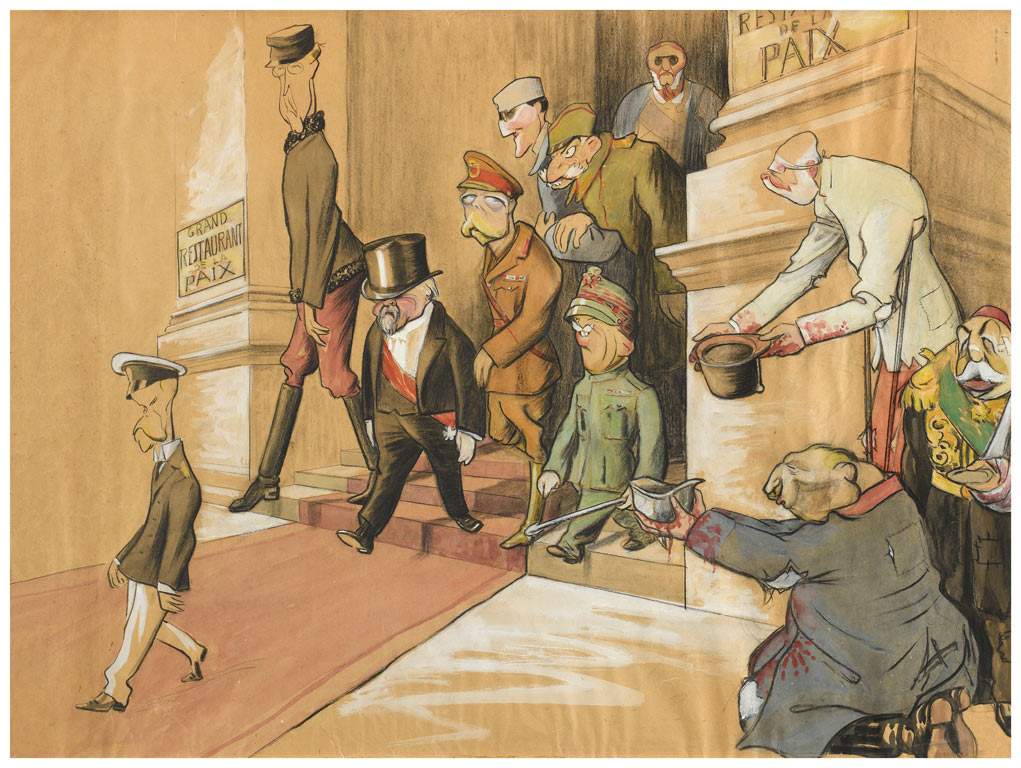

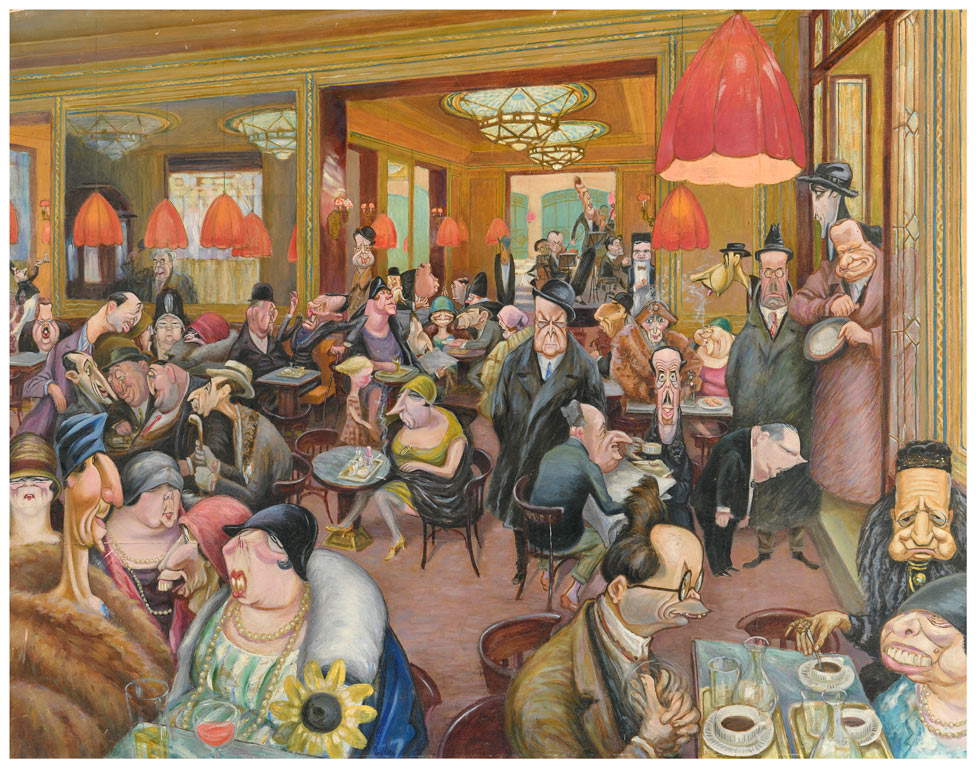
The exhibition itinerary of Umberto Tirelli. Caricatures for a Theater of Life makes use of an installation designed by the Faculty of Architecture of Bologna with the coordination of Matteo Agnoletto, in collaboration with Leo Piraccini and Matteo Giagnorio. The exhibition is divided into four sections: Modena laughs; Bologna, between theater, magazines and war; The National Theater of the Woodheads; The image of the Bourgeoisie; Lights and shadows between cinema and war; and Last act. The tour itinerary starts from the artist’s studio with furniture designed by him, books, magazines, objects and tools that, in its being physical and mental space, narrates Tirelli’s working method and exuberant personality.
The heart of the exhibition, however, is the original “National Theater of Wooden Heads,” more than 6 meters high, complete with sets and puppets, exceptionally surviving and on public display a century after its creation in 1921. It is this extraordinary artifact, a unique case of caricature theater animated by large-scale puppets depicting the most famous figures of national politics, customs and culture of the period, including, among others, King Victor Emmanuel III, Gabriele D’Annunzio, Pope Benedict XV, Giovanni Giolitti, Giosuè Carducci, Giacomo Puccini, Benito Mussolini, Eleonora Duse, to the Commedia dell’arte masks and the Modenese mask of Sandrone, translating the aims that animate Umberto Tirelli’s work: to spread, through caricature, awareness towards a time marked by restlessness, populism and ambitions that from fascism led to World War II, while not failing to stimulate critical observation of the contemporary world. The theater show condensed the plurality of languages used by Tirelli, as well as the refinement of an already “global” gaze on his own historical period and its international protagonists, as it would be on the occasion of his last sculptural production, partly exhibited at the 1951 Quadriennale in Rome, whose subjects included Stalin, Churchill and Roosevelt, but also Totò, De Gasperi and Togliatti.
The exhibition also facilitated the donation to the Museo Civico di Modena of a nucleus of 130 works representative of Umberto Tirelli’s work from a private collection. This was a generous gesture that enriches the heritage of the Modena museum dedicated to humorous drawing and puppetry. The acquisition of the Tirelli fund adds an important piece to tell the story of Modena’s role on the national scene in puppet theater, satirical drawing thanks to the many city magazines, and finally from the post-World War II period through the so-called “Modenese school” of comics and animation. Visitors are greeted by the animation video “Umberto Tirelli. Caricatures for a theater of life” that introduces them to the very special style of this “bitter, ruthless and disenchanted” illustrator, who made caricature his main means of expression. Accompanying the exhibition is a Sagep Editori catalog from Genoa, produced thanks to the support of Assicoop Modena & Ferrara, with contributions by Stefano Bulgarelli, Fabio degli Esposti, Giacomo Pedini, Rinaldo Rinaldi, Cristina Stefani, and Giuseppe Virelli. During the opening period of the exhibition, a series of collateral initiatives will be held, such as puppet shows, educational workshops as well as the opportunity to witness live the restoration of puppets by Emilio Zago, Tina di Lorenzo and Errico Malatesta, conducted by Gloria Forghieri of Laboratorio Alma Atelier in Carpi. In fact, the exhibition is also a unique opportunity to understand methods of making and working on masks, papier-mâché puppets and clothes that are the result of a meticulous creative process. Flanked by his wife Clara, Tirelli designed the clothes faithfully inspired by those of the characters. They are high-level sartorial creations, for the fabrics used as well as for the accessories, buttons, brooches, necklaces and earrings for the female figures, down to the styling of the hairstyles. Media partner The Resto del Carlino. For more information you can visit the Modena City Museum website.

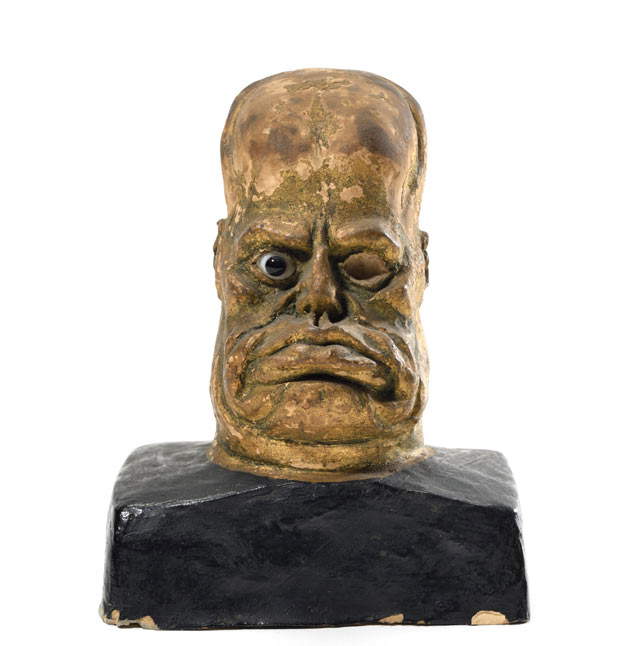

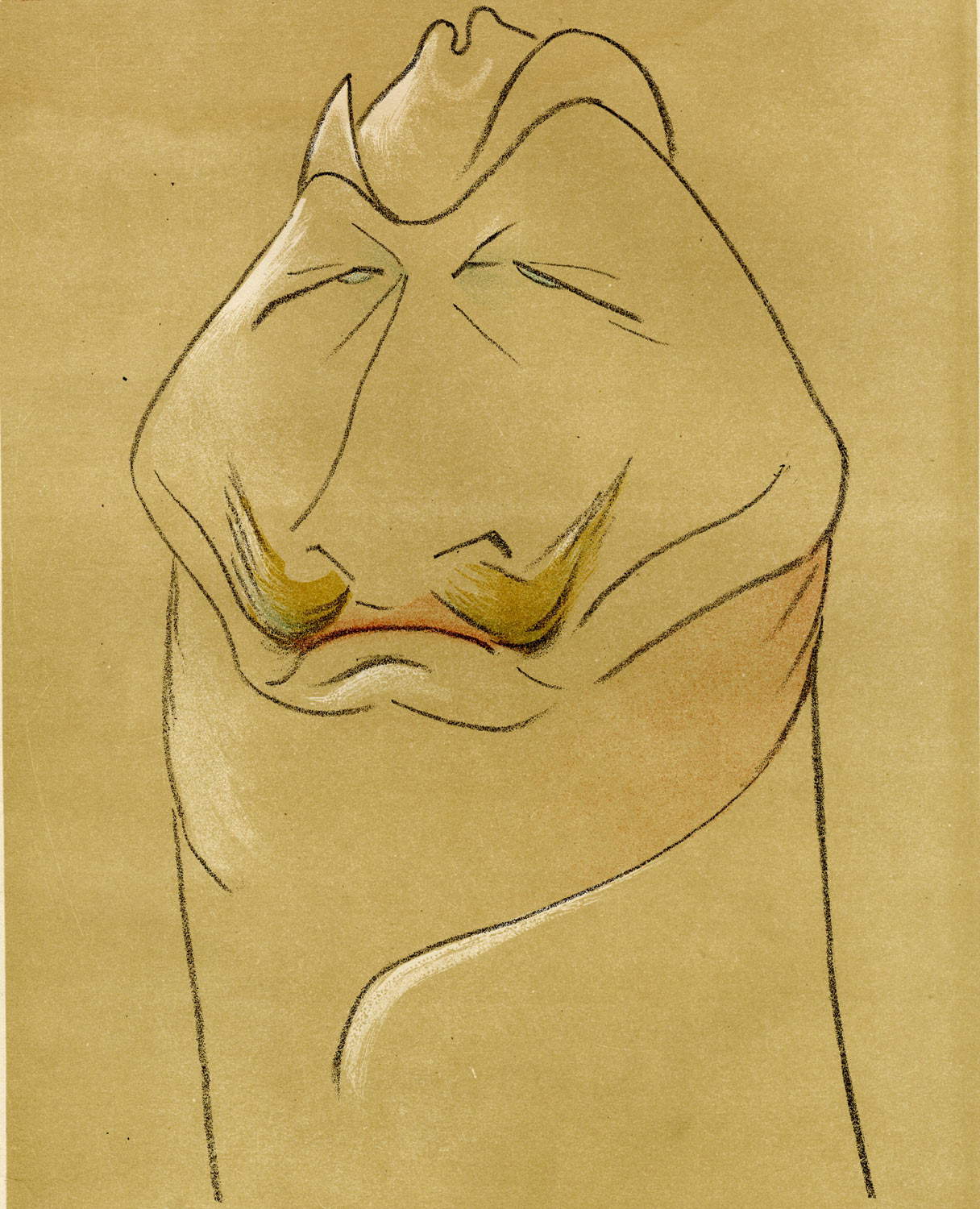
“The one hundred and fiftieth anniversary of the Civic Museum of Modena,” says Andrea Bortolomasi, councillor for culture of the Municipality of Modena, “closes with an important exhibition initiative organized off-site, due to the continuation of works affecting part of the exhibition itinerary. However, the rooms of the Complesso San Paolo in which it takes place are of great prestige, also because they have recently been upgraded by a restoration project thanks to which an entire pictorial cycle from the early seventeenth century that was believed to have been lost has been brought back to new splendor, making the environment particularly evocative. The exhibition dedicated to Umberto Tirelli brings to completion the long research work conducted by the Museum on this hitherto little-known and precisely for this reason inadequately evaluated figure of an artist, who was active between the end of the 19th century and the aftermath of World War II and whose exclusive language was caricature, although he used different means of expression. The backbone of the exhibition, which presents more than two hundred pieces to the public, consists of the one hundred and thirty works recently donated to the Museum by Mauro Zanichelli, which document his entire activity conducted between Modena and Bologna and also include numerous ’wooden heads,’ the original large-scale puppets created by the artist to experiment with a new form of cultured theater, in close dialogue with current events in the political scene and the world of entertainment. The exhibition finally allows us to understand, and hopefully also appreciate, the figure of Tirelli in his complexity and multifacetedness, tracing his very long artistic career, which lasted more than half a century, against the backdrop of a complex and contradictory historical moment.”
“The renovated exhibition spaces of the Complesso San Paolo, now entrusted to the management of the Department of Culture,” says Francesca Piccinini, director of the Museo Civico di Modena, "host theimportant monographic exhibition that the Civic Museum dedicates to the vast artistic production of Umberto Tirelli, a multifaceted artist even in the exclusivity of his expressive language, constantly marked by a satirical vision of reality that interprets one of the most characteristic veins of Modenese life. With an itinerary that presents more than two hundred works, the exhibition traces Tirelli’s entire artistic career, which took place between Modena, Bologna and Rubiera, but with a gaze marked by a broader vision, with a European profile, both on the level of the political scene and on that of artistic novelties, particularly Expressionism. An author featured in previous reviews produced by the Museo Civico (from the 2007 exhibition Ghigno e sorriso to the more recent Una risata ci salverà. Modena and Caricature in the Years of the Great War and Alessandro Tassoni. Bisquadro spirit of 2015) Umberto Tirelli deserves to be counted among the masters of early 20th-century national caricature. The vastness of his artistic production is now finally brought together in a wide-ranging event, curated with great passion by Stefano Bulgarelli and Cristina Stefani, an event that we hope will be able to illustrate the centrality of a figure who made caricature his unique and indispensable means of expression, coming to dominate at the national and European level. Tirelli’s activity in this field is intertwined with the theatrical dimension that accompanies his long artistic parabola, from the first theatrical performances in Modena in the early 20th century to the well-known Teatro Nazionale delle Teste di legno proposed in the 1920s, a unique case of caricature theater animated by large-scale puppets depicting the most famous exponents of national politics, customs and culture of the period. The exhibition aims to show how through his multifaceted work divided between drawing, sculpture, painting, masks and puppets, stage sets, floats and furniture design, Tirelli proved capable of offering a sharp and ironic look at the bourgeoisie and thelocal and national establishment, over a historical span from the Belle Époque and the Great War, fascism and World War II, to the international tensions that marked the beginning of the Cold War and the dawn of the first economic boom. In the exhibition, the direct and emotional involvement of the public is stimulated throughout the visit, thanks in part to the evocative layout designed by young architects Leo Piraccini and Matteo Giagnorio, from the Faculty of Architecture of Bologna and coordinated by Matteo Agnoletto, a staging that features environmental reconstructions, audio-video stations and, as the focus of the second exhibition environment, the theater mounted again after a century of oblivion thanks to the willingness of the collector and the expertise of set designer Rinaldo Rinaldi. The exhibition accompanies and presents to the wide public the important gift recently received by the Civic Museum a nucleus of 130 works representative of the artist’s entire activity from Mauro Zanichelli’s collection. A generous donation that enriches the civic collections dedicated to humorous drawing and puppetry. The acquisition of the Tirelli fund adds an important piece to adequately document the role played by Modena in the national panorama of puppet theater and satirical drawing, witnessed the latter between the nineteenth and twentieth centuries by several city magazines and reaffirmed after World War II by the success of the so-called ’Modenese school’ of comics and animation."
 |
| Modena dedicates an exhibition to Umberto Tirelli, one of the greatest satirical illustrators of the 20th century |
Warning: the translation into English of the original Italian article was created using automatic tools. We undertake to review all articles, but we do not guarantee the total absence of inaccuracies in the translation due to the program. You can find the original by clicking on the ITA button. If you find any mistake,please contact us.